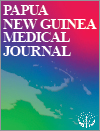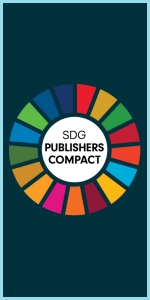MJ24006Factors affecting outcomes of patients with intestinal obstruction operatively managed at Alotau Provincial Hospital: a hospital-based cross-sectional study
This study investigated the surgical outcomes and factors associated with unfavourable outcomes in patients with intestinal obstruction at Alotau Provincial Hospital, Papua New Guinea, from January 2020 to December 2022. Several clinical features were significantly associated with poor outcomes, including vomiting, abdominal distension, dehydration, vital sign abnormalities (tachycardia, fever, tachypnoea, hypotension), radiological and laboratory findings (air-fluid levels on X-ray, leucocytosis, granulocytosis), and intensive care unit admission. The findings emphasise the importance of timely surgical intervention, particularly in patients showing signs of sepsis.
MJ24006 Abstract | MJ24006 Full Text | MJ24006PDF (325 KB) Open Access Article




